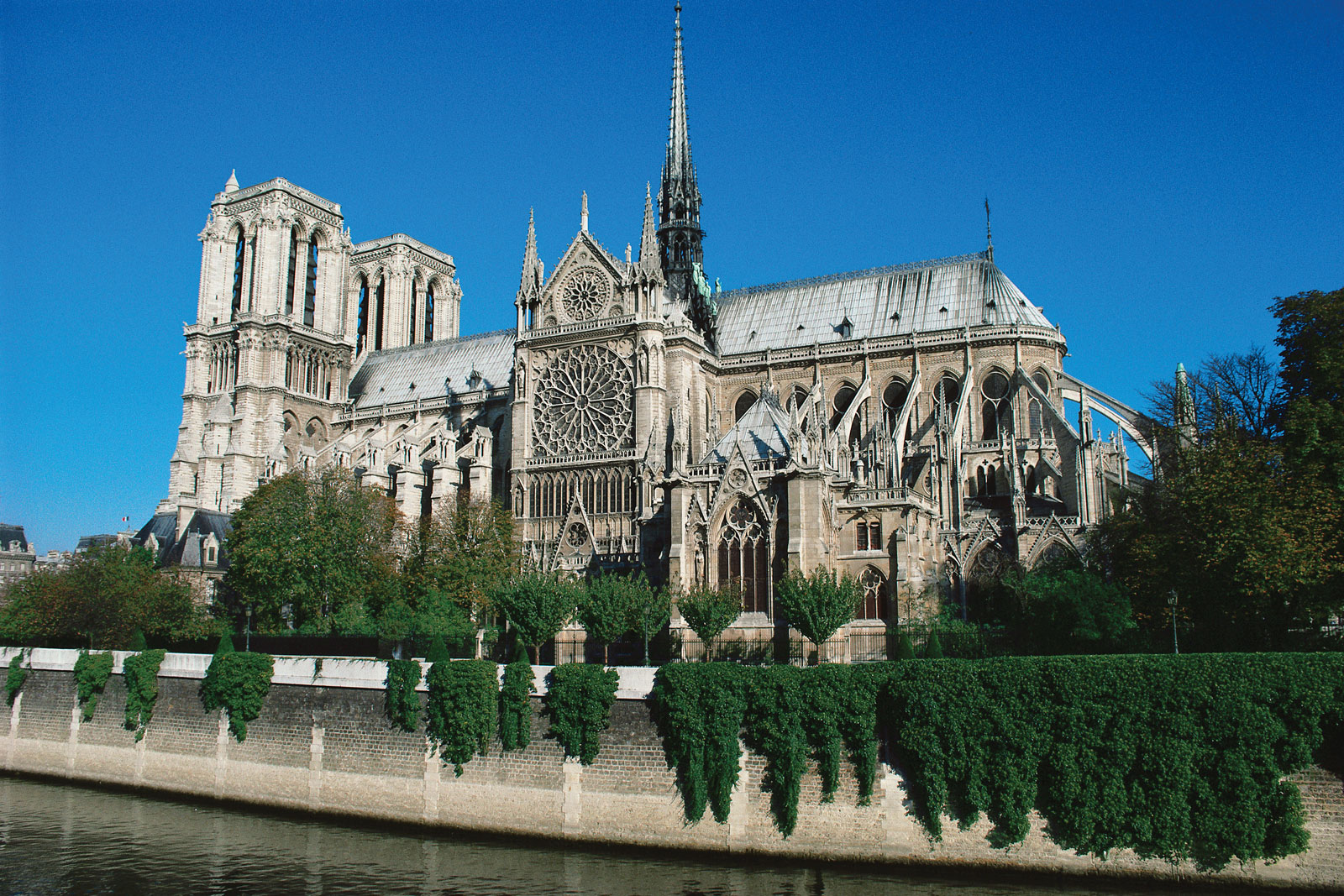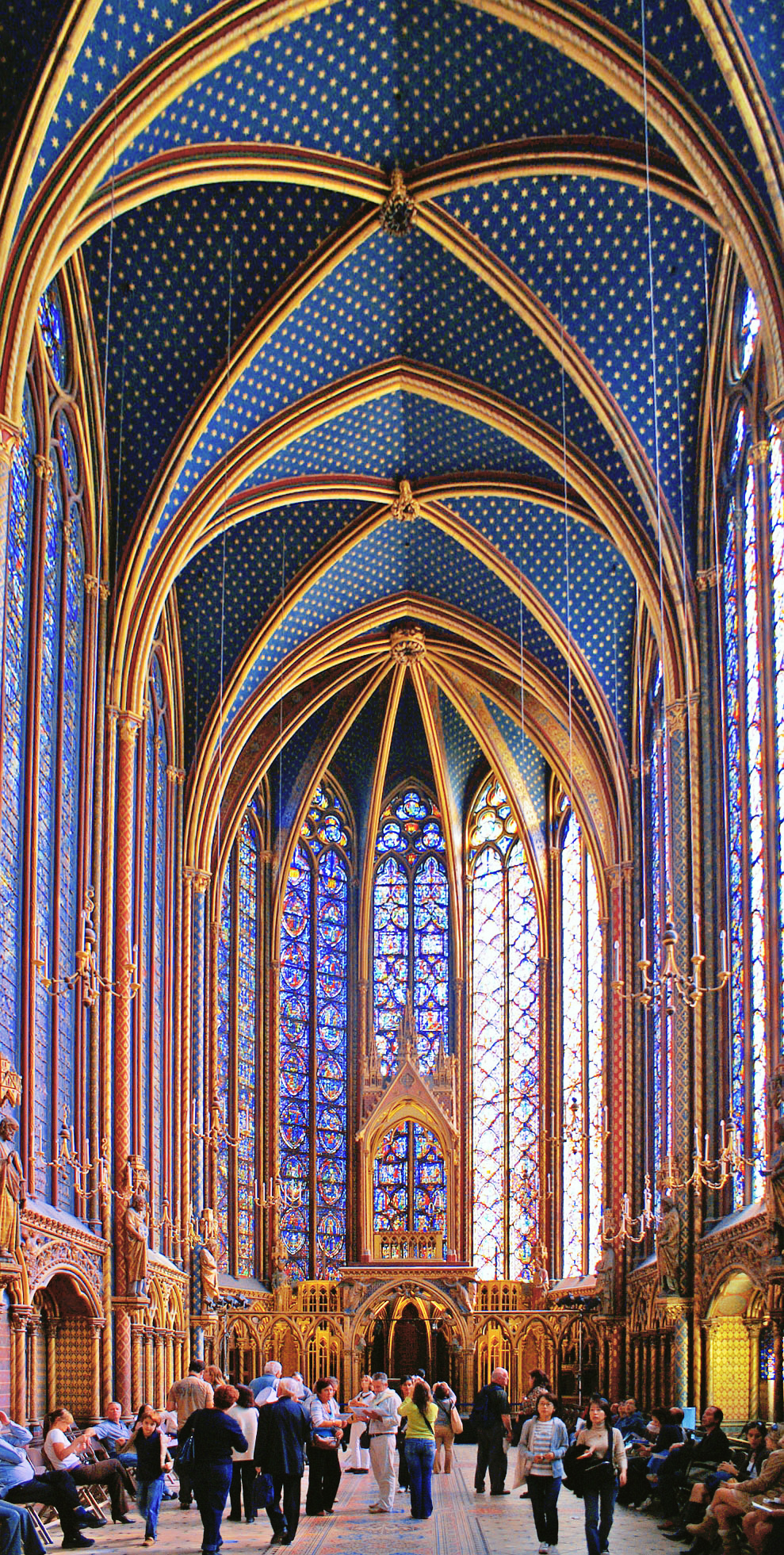
Stained Glass Windows
While stained glass windows are found in many places of worship, they are particularly prevalent in Gothic cathedrals. Featuring meticulously cut colored glass, these kaleidoscopic windows—which are typically either tall and arched ‘lancet' windows or round ‘rose' windows—are larger than those found in other types of churches. This allowed them to let in more dazzling light. Gothic stained glass windows also frequently feature tracery, a decorative type of stone support, and detailed scenes from Biblical stories.
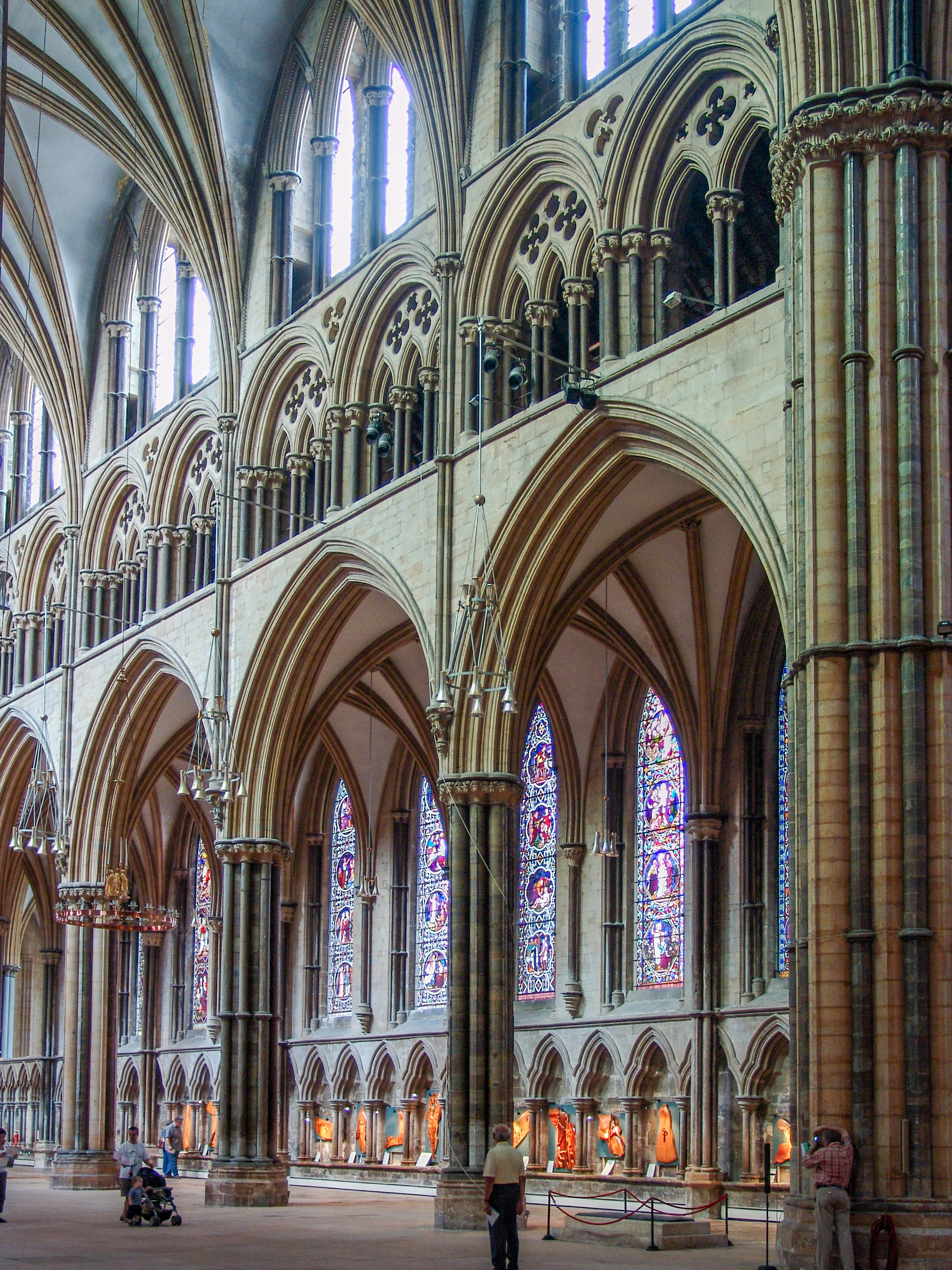
Pointed Arches
A primary feature of many religious structures, ample archways can be found in most Gothic churches and cathedrals. Rather than the wide, rounded arches characteristic of Romanesque buildings, however, architects working in the Gothic style adapted the tall, thin pointed arches found in Islamic architecture. This silhouette accentuated each cathedral's height, symbolically pointed toward the sky, and accommodated similarly-shaped vaulting.
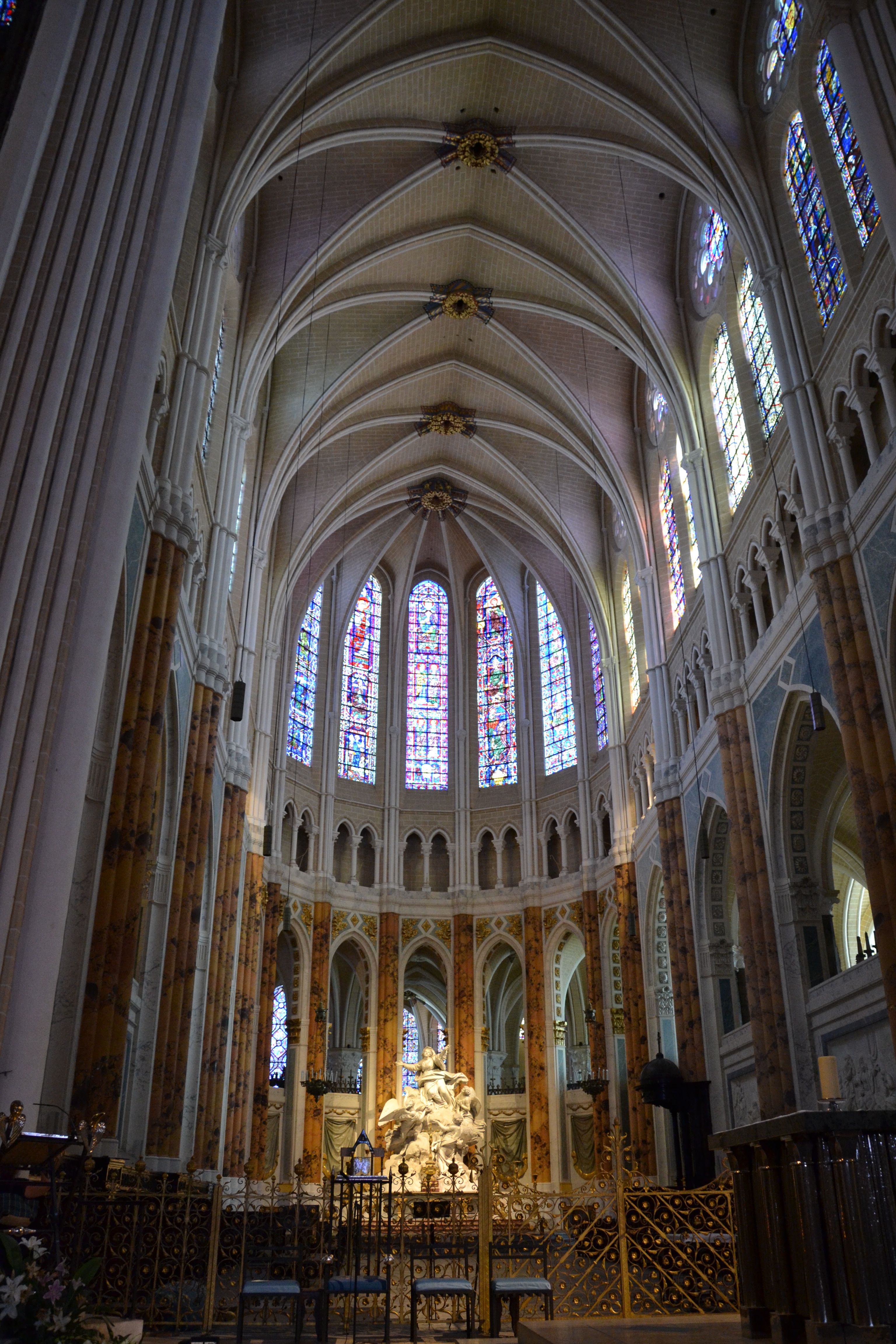
Ribbed Vaults
In order to incorporate higher ceilings and taller windows into their designs, Gothic architects utilized a new method of structural support called ribbed vaulting. Ribbed vaulting involves the use of intersecting barrel vaults—arches placed parallel to one another in order to support a rounded roof. In addition to showcasing a more decorative aesthetic than traditional barrel vaults, these criss-crossed constructions offer increased support for the sky-high buildings.
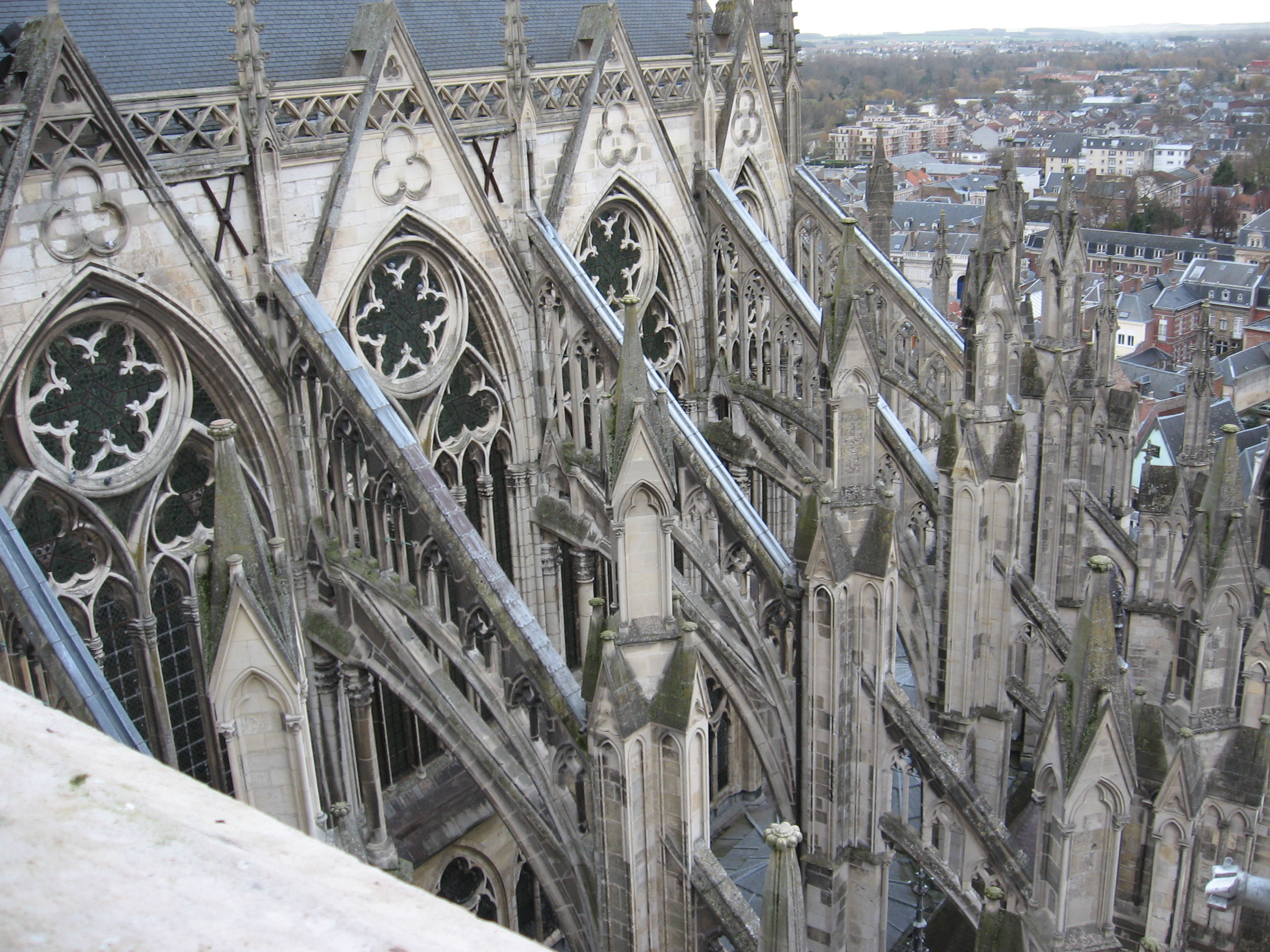
Flying Buttresses
On top of these advanced vaulting techniques, Gothic architects employed another unique method of structural support: flying buttresses. These projecting stone structures reinforced the buildings by redistributing the weight of the heavy roof to a lower, more solid level.
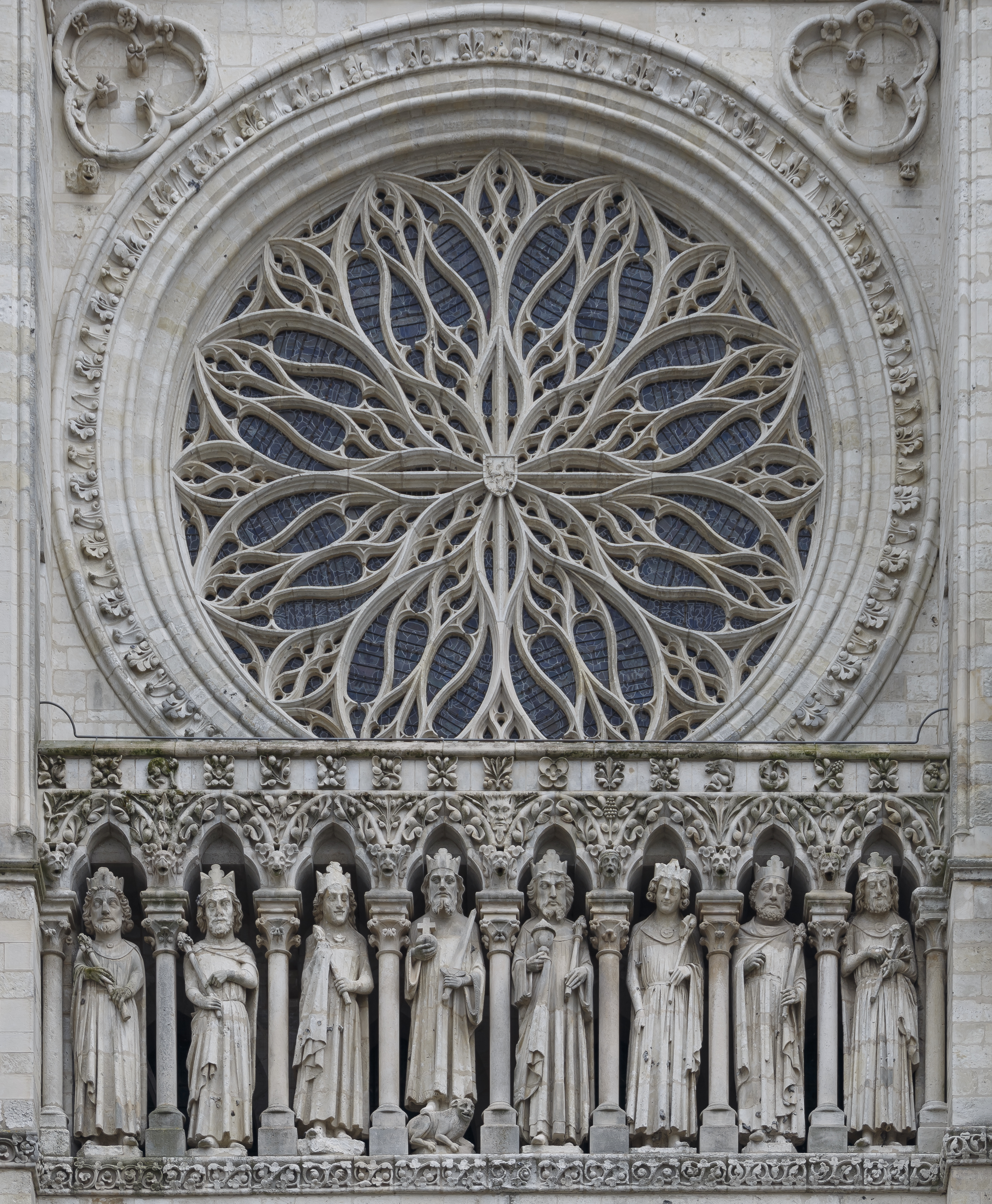
Tracery
Tracery is an architectural solution by which windows (or screens, panels, and vaults) are divided into sections of various proportions by stone bars or ribs of moulding. Tracery is practical as well as decorative, because the increasingly large windows of Gothic buildings needed maximum support against the wind.
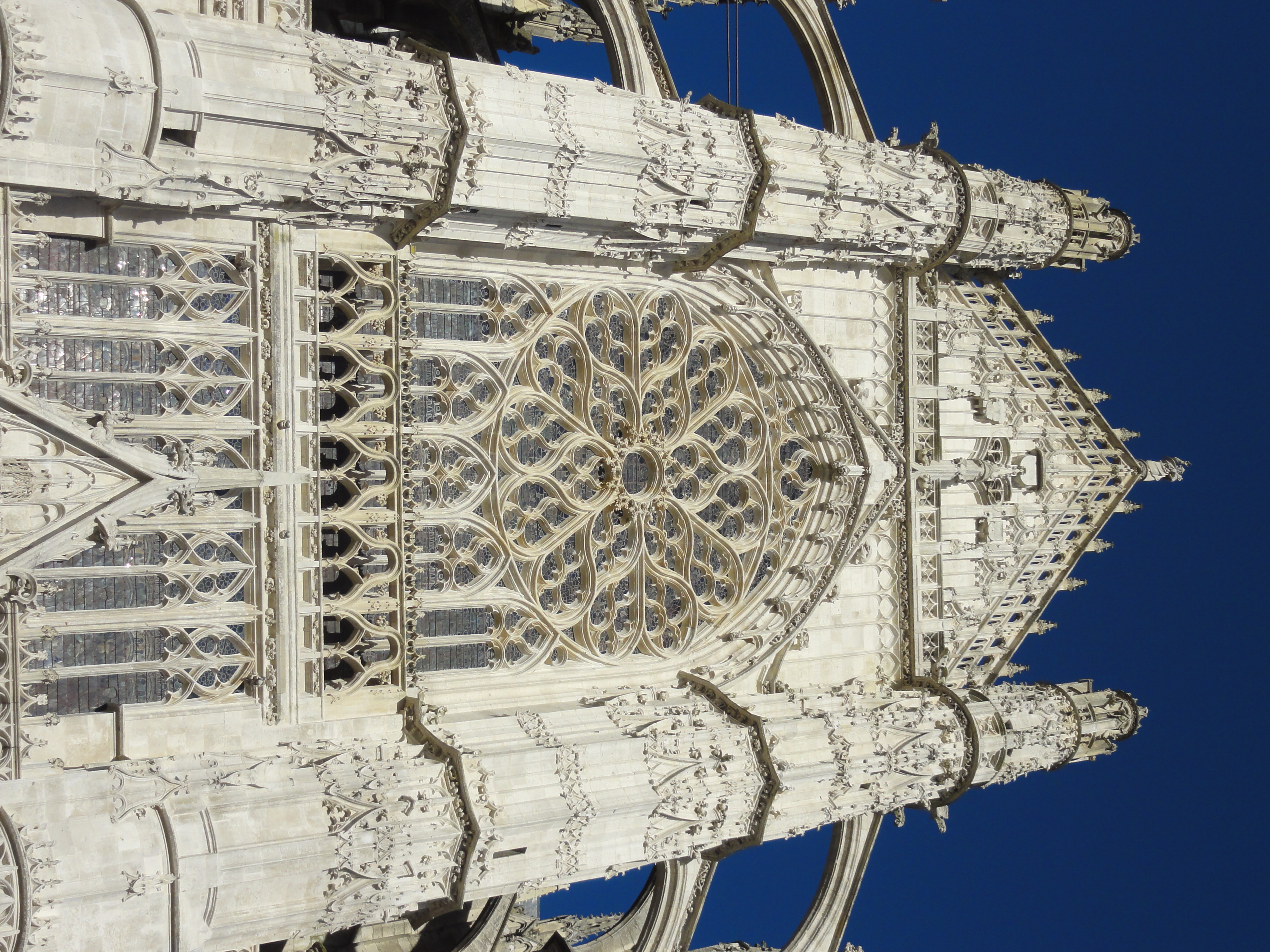
Ornate Decoration
A final feature found in Gothic architecture is the presence of ornate decorative elements. These include embellished colonnades and colonettes, sculptural moldings, statues of saints and historical figures, pinnacles and spires, and gargoyles, grotesque figures that double as water spouts.
